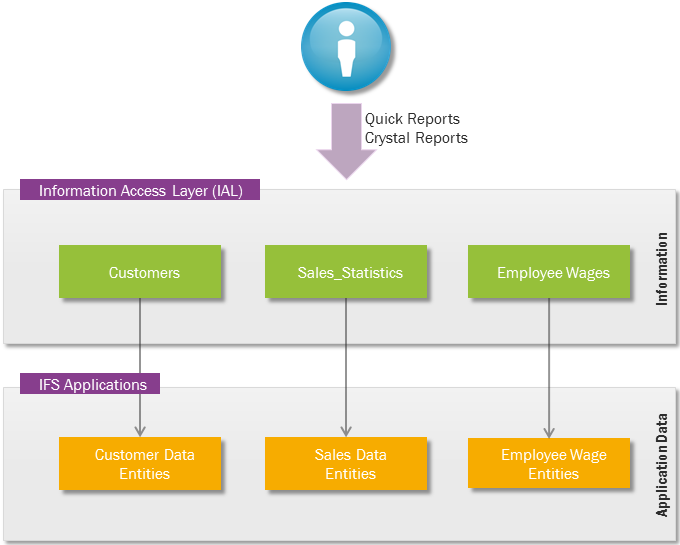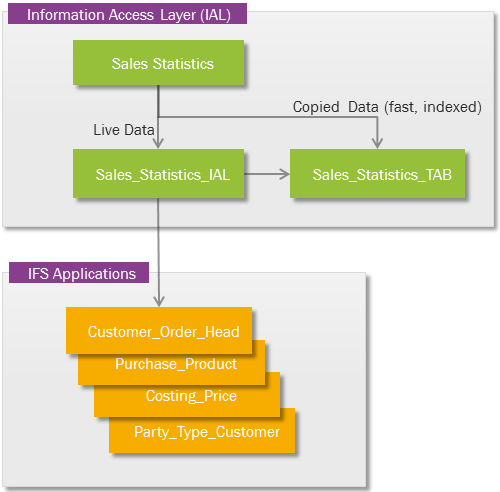
Every application contains a lot of useful data. However it is typically hard for user, report developers, and decision-makers to extract useful information directly from this application data. Typically the main problem is that the application data contains to many objects or with to fine-grained detail, forcing the information seeker to find and combine lots of data sources in order to get any useful information.
The purpose of the Information Access Layer (IAL) is to make the information in the application easier to find and use by defining a number of IAL objects that expose information (not application data) in the application in a neat and tidy way.
The IAL is a presentation tier component in the OLA model that sits between the application data and information gathering and analysis tools such as report tools, data warehouses, and OLAP analysis.

The Information Access Layer presents information to the user and tools in an easy-to-find and easy-to-understand manner.
The IAL has many possible uses. Below are some of the more important ones.
IAL objects are implemented as database views in Oracle. An IAL object can optionally be accompanied with a table, which can be used to store a copy of the data in the IAL object for high-speed access.
When an IAL object is installed, the Foundation1 tools create a new view, which shows either data from the IAL definition view or from the copy table, depending on settings the administrator makes.

IAL object implementation
All IAL implementation objects are deployed on a dedicated Oracle user - the IAL_OWNER user.
Deployment of IAL objects involves deploying new database objects into the Oracle database (in this case IAL view and optional table). Oracle object deployment is only possible to be performed by Oracle DBAs and IFS Application owners. End users or regular administrators do not have authority to deploy new objects into the database.